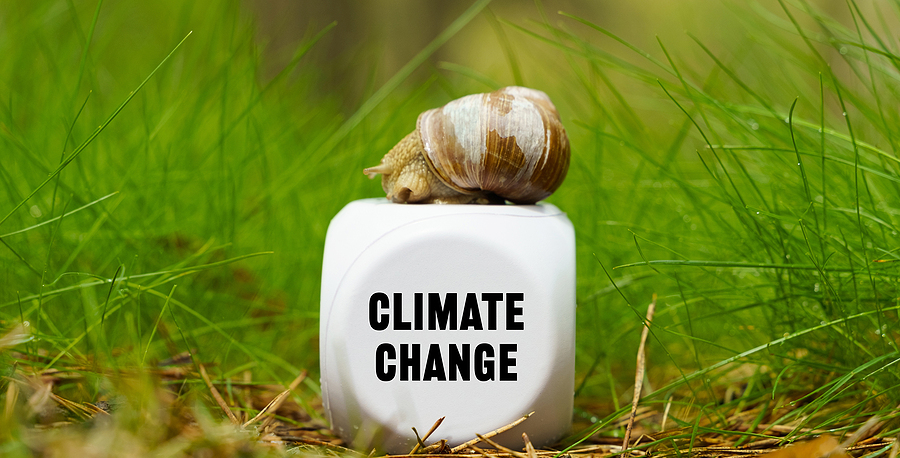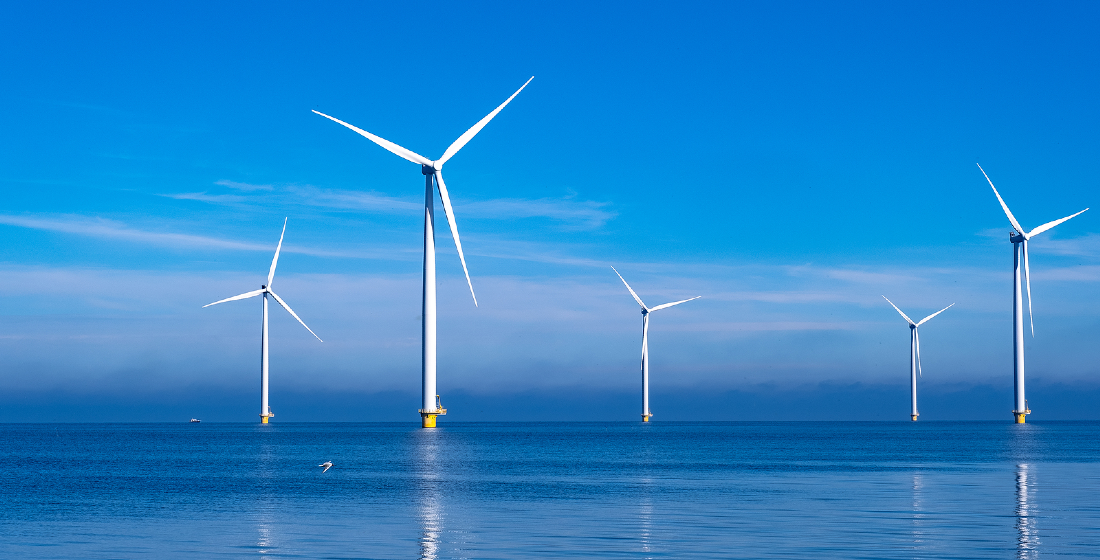COP27: Was it the 'implementation COP'?
COP27 was branded as the ‘implementation COP’ – this was the climate summit meant to finally fulfil financial pledges and translate talk into action. Aside from a few promising, if unseasoned, initiatives, government commitments were not in the billions expected and certainly not the trillions necessary.

As Jeremy Lawson, head of the abrdn Research Institute, says, “there was little new money unconditionally committed at all of COP27”. He points to the growing “credibility gap” between pledges and financing: “The financing is insufficient in scale, it has not been delivered on the timeframes originally promised and too much is in the form of loans rather than grants.”
In terms of government pledges, it is old news by now that the $100 billion commitment to developing countries fell $17 billion short by its 2020 deadline, and OECD expects it to remain unmet until 2023. On the upside, the loss and damage fund has been launched – but its details still have to be agreed.
Adaptation
According to Joan M. Larrea, CEO of Convergence Blended Finance, COP27’s focus on adaptation, food security, and agriculture “was encouraging”. According to the UNEP’s 2022 Adaptation Report, finance flows to developing countries are currently estimated to be 5-10 times below the needed $300 billion per year until 2030 – a large but not eye-watering figure compared to past COP headlines.
One of the big adaptation announcements was UN Secretary General Antonio Guterres’ Executive Action Plan for the Early Warnings for All initiative – a call for $3.1 billion in targeted investments for early warning system implementations. Commonly regarded as the ‘low-hanging fruit’ of adaptation efforts, such systems are considered a relatively cheap and effective way to protect people and assets. No financing has been committed as yet.
But the cause celebre was the loss and damage fund for vulnerable countries hit hard by climate change and related natural disasters. The idea of a collective loss-sharing insurance pool had first been proposed by AOSIS in 1992, but had been periodically raised and dismissed in conferences since. Larrea says “it’s an awkward topic but I’m glad to see it come out and hopefully it breaks open a logjam of conversation. From what I could gather, it was a major breakthrough”.
In particular, the facility brought to the fore a long-standing tension on who was obliged to pay. The EU U-turned on the final morning to agree to the fund on condition that big economies and emitters still classed as developing countries under 1992 regulations should be included as potential donors, not recipients. The compromise reached means that these countries will be able to voluntarily contribute to the fund and that the most vulnerable economies will be prioritised.
Governments have agreed to set up a transitional committee to decide how to operationalise the fund. Their first meeting will fall at the end of March 2023. It is expected to take a year to be fully mandated with a major scoping process to identify current instruments and gaps.
However, critics argue that the fund agreement’s language on both limiting emissions to 1.5C and phasing out coal is weak. Much like putting a plaster on a broken leg, adaptation efforts without substantial reductions in emissions is a non sequitur. 196 countires are due to sign the fund but there is yet no definition on how much money will be committed, how the fund will operate, and who will commit financing.
As Lawson says, only “tiny amounts have been pledged so far” – it’s a “thought bubble, in the sense that it looks like something that you have written down on a page, but there's no institutional architecture around it”. He also questions the likelihood of such a fund receiving financing from the US due to the current state of Congress and questioned the possibility of encouraging China to contribute.
Mitigation
On the mitigation front, notable initiatives included the Africa Carbon Markets Initiative (ACMI) and the Just Energy Transition Plan (JETP) – although the latter was not actually announced at the conference but at the G20 in Indonesia.
ACMI was co-launched by UNECA, SEforALL, and GEAPP with the aim of reaching 300 million carbon credits annually by 2030, dramatically increasing Africa’s participation in the global carbon market. The initiative aims to enhance voluntary carbon markets across the continent, ensuring community level and grid renewables are supported by removing bottlenecks from national ecosystems.
According to Alvin Jose, principal energy specialist at SEforALL, there is currently a serious carbon credit gap on the continent. The system is plagued by capacity issues and getting a carbon credit is a laborious process with international verifiers required to fly in and, subsequently, it is a process that runs up severely high transaction costs.
As part of the initiative, ACMI is also working with major carbon credit buyers and financiers, such as ETG, Nando’s, and Standard Chartered to set up an advance market commitment for high-integrity African carbon credits. Jose says that these credits have also received interest from local African banks.
Guntur Sutiyono, country lead for Indonesia at Climateworks Centre, argues that COP27’s initiatives were “overshadowed by the $20 billion commitment for JETP”. The long-term, landmark partnership between Indonesia and other world leaders is designed to create an ambitious and just power sector transition in the country, and maintain the 1.5C global warming limit.
Sutiyono highlights two major achievements that the partnership brought together: the first was the early retirement of the 660MW Cirebon1 plant in West Java – a landmark refinancing expected to cost $250-$300 million in order to reduce the plant’s life by 10-15 years. “It was that big financial commitment that pushed that deal through”, he says, “now the money is there, the projects are ready to go – the developers were already waiting in line”.
The second achievement was increasing the country’s renewable composition in the electricity mix from 23% to 34% - from where it currently stands at 5%. Sutiyono adds “that’s really important – the 23% goal had been there for a long time, and everybody was saying that it’s not enough to get to net-zero emissions”. He says bottom-up pressure from NGOs had not been enough to push the government’s ambition: “They needed a top-down mandate”.
A $10 billion investment will be drawn from the international partners group (IPG), including Indonesia, Japan, USA, Canada, Denmark, the EU, France, Germany, Italy, Norway, and the UK. The GFANZ Working Group aims to mobilise and facilitate the remaining $10 billion via private finance.
Watching how GFANZ members contribute to JETP will be a really interesting display of to what degree and how difficult it is for private capital to fill the transition financing gap. “Make no bones about it”, says Lawson, “private sector finance cannot scale up as quickly, or to the extent necessary to meet the Paris objectives unless governments provide the right policies, the right signals to markets and the right regulations”. How are the IPG governments going to facilitate $10 billion in GFANZ investment - with concessionality or with guarantees – and presuming the total amount will be almost entirely loans, how is this feasible at a global level against a burgeoning debt crisis in developing nations?
National voices
Larrea says that the most exciting initiatives she saw were driven by developing countries themselves. “It would be great to see more national initiatives get backing from all their requisite donors, but that start from these countries and are a statement of their own needs, their priorities, and their own values”, she says.
For example, Barbados’ Bridgetown Initiative proposed the establishment of a climate mitigation trust that would prompt the release of $650 billion from IMF through a mechanism called special drawing rights (SDRs) – a facility that would allow members to borrow from each other’s reserves at overnight rates – currently 276bp.
The facility will serve as collateral against borrowing currencies for a share in energy transition project returns. Due to the level of equity investments, it has been calculated that IMF’s initial commitment could stimulate an additional $3-4 trillion in private investment.
The initiative also included features for giving climate-vulnerable countries access to low-interest, long-term loans for adaptation, natural disaster clauses in all bank loans, and grants for loss and damage that would be funded by a 2% tax on fossil fuel exports – all in the aim of shifting the fiscal responsibility from developing to developed nations.
Lawson applauds the initiative's creativity, in particular “suggestions like allowing special drawing rights at the IMF or an expanded scope of the multilateral development banks to catalyse private finance to meet a wide range of climate objectives in the poorer countries that need it most”. However, he also warns that, just like fleshing out the details of the loss and damage fund, “getting agreement around that is going to be very, very challenging”.
For Larrea, Ireme Invest – a facility launched by Rwanda Development Bank and Rwanda Green Fund – was another highlight. Consisting of several financing instruments and two windows, the Project Preparation Facility at the Green Fund will offer grants for early-stage project activities, and a credit facility embedded within the DFI will offer credit guarantees and concessional loans.
The facility received a $104 million initial capitalisation including: credit lines of up to €20 million each from EIB and AFD, a guarantee cover of up to €20 million from Sweden, a £7 million grant from FCDO, a credit line of up to $15 million from Global Climate Partnership Fund, and a capitalisation fund of up to $22 million from the Rwandan DFI.
The Uxolo perspective
Despite the progress on some fronts, most commentators were concerned about the lack of money committed at COP27. Ambition was high in the language of the Paris Agreement, but “the big gap was between that ambition and the concrete commitments of individual countries” says Lawson.
On the upside, COPs do have a slow (arguably far too slow) ripple effect on funding beyond the events themsleves. As Sutiyono notes, big announcements on zero deforestation and coal retirement at COP26 had created mixed reactions from governments, driving attention to some of the most important climate issues. “The coal retirement movement helped build momentum up to G20, and now we see the JETP commitment – that was not a standalone success, it had come from something before.”
Furthermore, it does seem as though governments are now readier to tackle some of the more difficult conversations around who pays. “It seemed to me”, says Jose, “that the focus was more around adaptation and loss and damage and the other pain points of negotiation”. But as Lawsons adds, the “reality is that ambition means little without the credible action to support it.
So was COP27 the ‘implementation COP’? No – but it might prove to have been the difficult conversation required to get implementation happening before it all becomes too little too late.





